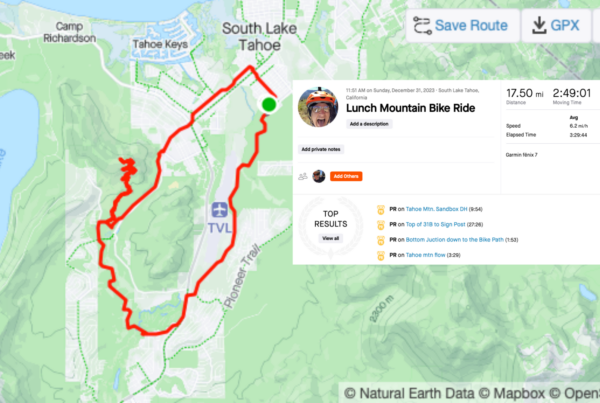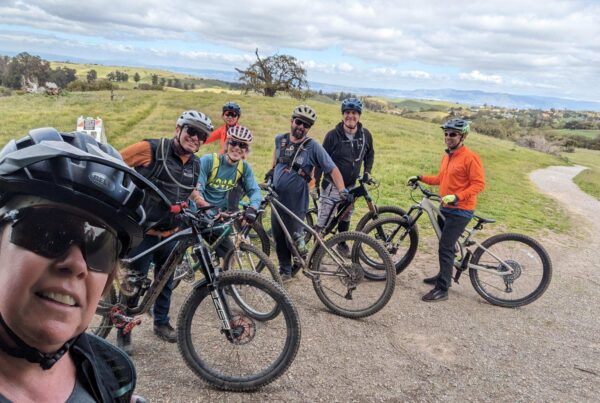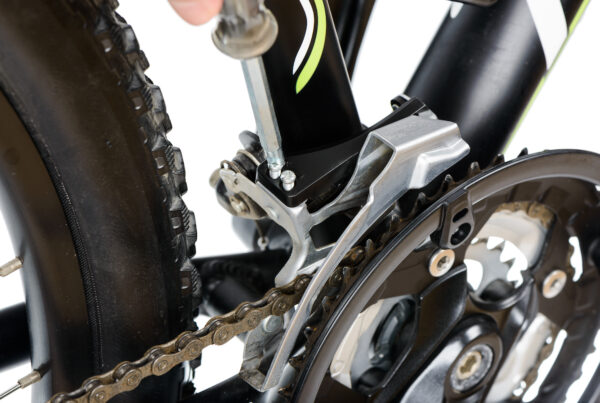Whats Right And whats wrong depends on what your doing.
Term Key : *BOS-Base of Support *COM-Center of Mass *LOG-Line of Gravity
In the last installment of A Singletrack Minds Tips and Techniques we looked at some of the key points to Riding on the Offensive.
Now, let’s look at how some of those key points change depending on terrain. We will also look into some Exceptions of the guidelines set in the last article.
I have a saying I like to use when I am coaching “Always a never, Never an always”.
Basically meaning, there are many times in the sport of mountain biking there are exceptions to the main rules set forth (Riding on the Offensive). A great example is the rule of Centering your weight in between your wheels. If you are trying to lift your front or rear wheel and you keep your weight centered, it’s going to be really hard to do either. So, there is an exception to the rule of maintaining your Center Of Mass between your Base Of Support. If you wish to effectively lift your front or rear wheel then you’ll need to make changes in your Center Of Mass. At that point then your Base Of Support will change to a single point opposite of the wheel being lifted. This leads into a whole different topic, which will be talked about later.
For this Installment of A Singletrack Minds Tips and Techniques we are going to look at Your base body position or what we call The Attack position. In the attack position our COM* being near the bottom bracket as well as our LOG* being nearly centered between our BOS*. When we find ourselves on varying terrain, (most mountain bike trails right) the LOG* will not change. That’s a pretty set component of life but your COM* and BOS* will change. We find two basic changes in terrain as we get out on trails, either we go up or down from the position we are starting from.
Starting point
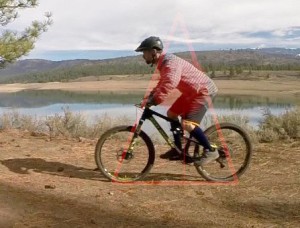
Descending
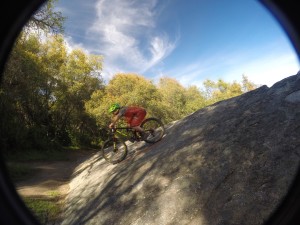
BOS, COM and LOG shown on a steep descent
Now the core fundamentals of the body position doesn’t change but the angle of the bike does. What does that mean? Well it means as the bike transitions from one position to another your body will maintain balance but the bike itself will either be positioned on an incline or decline. Here is where the variable comes into play. As the bike transition between these points the BOS* will change. If it’s only one transition say from flat to uphill or flat to downhill then the BOS* will be shortened relatively. Although, as the terrain gets more complex so does the movement of your COM* in relationship to the bike. Also, the BOS* will cycle through a normal point to a shortened point then back again to a normal point. This may happen several times per second depending on the trail and speed. So if you need to adjust to rapid changes you’ll need to maintain a relaxed position. Sometimes you may need to actually be ready for the next move ahead of time. Say raise your COM* our lower your COM* depending on the next section of trail. A pumptrack shows a great example of this, where you need to absorb (compress) the front side and then extend (pump) the back side. This motion can either be done to maintain contact with the ground (contouring) or to actually gain traction and momentum (pumping).
This short movie shows how rolling over or into this pitch. My bike actually rises up to my chest, then as I transition over the top, I stabilize briefly. Next the bike pivots under me again. As I approach the bottom transition you can see a brief point of movement to be ready and absorb. Then as I roll away the bike rotates back to its natural position.
movie body position
Rolling down steep slopes, Body position from A SingleTrack Mind on Vimeo.
These photos also show a couple key points in this progression.

Attack Position at the top, good range of motion available.
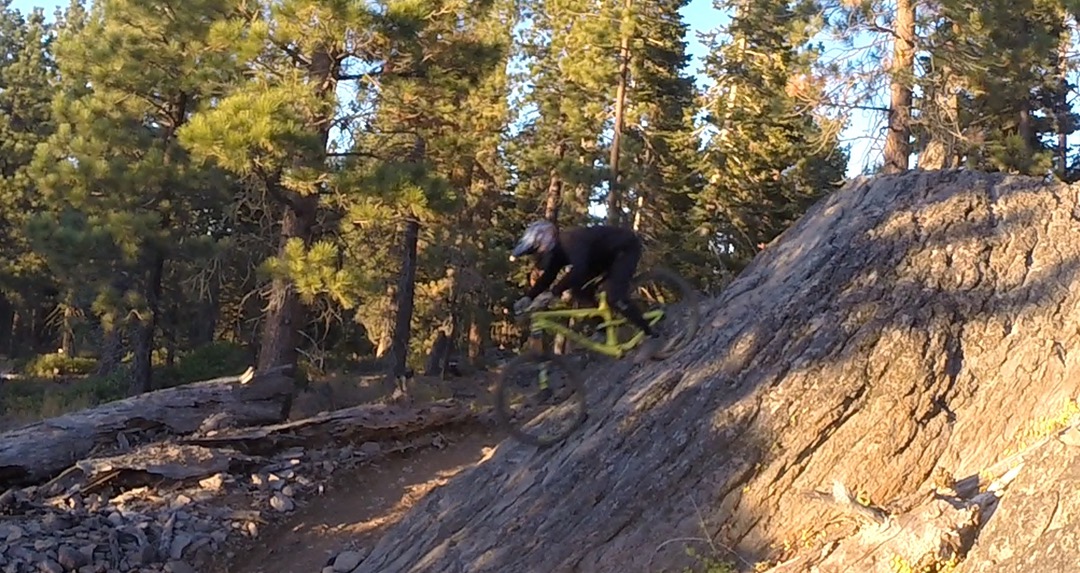
Middle of the roll down, Still in balance but BOS is shortened.
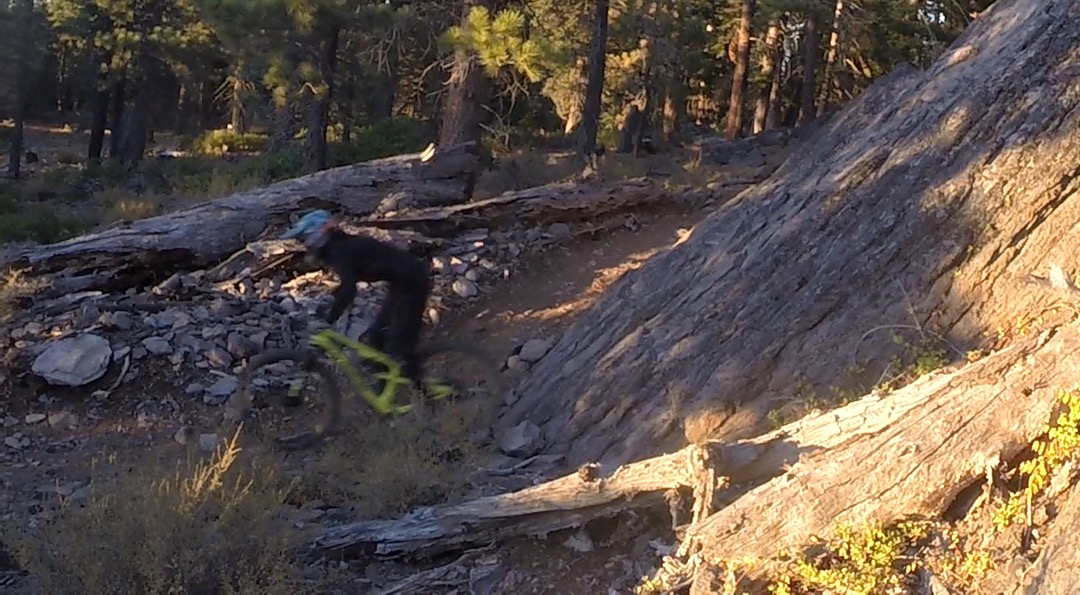
Rolling out, back to middle Attack position. BOS is lengthened.
So for example you’re out on your favorite trail, which has lots of changes in terrain right? These can be anywhere from a small rock in the trail to a large roll down or even a set of stairs. As you come towards these obstacles your COM* needs to be ready for that next obstacle. So the first feature is a small creek crossing. We would need to lower the COM* to allow for our range of motion to match the amount of bicycle movement needed. This is going to vary depending on your speed and size of the creek crossing. The small creek at slow speed is easy to handle and a large creek at higher speed is also easier to handle. Change those around and thing become a lot harder. The smaller creek at higher speed will require a lot more input from your body into the bike. Maybe even a change in your BOS* to a single point. i/e lifting the front wheel and rolling through on the back wheel aka: a Manual. The larger creek at slower speeds just changes the motion into two different actions, extension, and then absorption, not really making it harder but just changing the overall dynamic. This same principle can be applied to climbs and descents. It’s all about the transition to the next obstacle. A longer transition is going to require less body movement whereas, a short transition will require more and faster body movements.
In conclusion, think about staying balanced, maintain that position and let the bike move underneath you. Adjust your COM* and BOS* to effect the bikes position in conjunction to the required action. Move when required to move. Stay tuned to A Singletrack Mind for more tips and techniques.
This is only part of the things that will help you ride on the offensive, we will add more to this in the next few posts, Hope you enjoy and please contact us with any questions that may come up.
Read more and Sign Up
*BOS: Base Of Support
*COM: Center Of Mass
*LOG: Line Of Gravity

